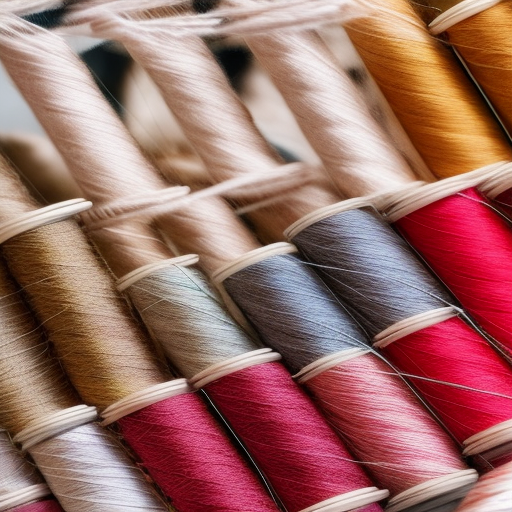
Introduction
Sewing threads play a crucial role in the textile and fashion industry. From securing seams to adding decorative elements, the right choice of thread is essential to achieve high-quality and durable garments. In this article, we will explore different types of sewing threads and their uses.
Cotton Thread
Cotton thread is a popular choice for various sewing projects. It is made from natural fibers, which make it incredibly strong and soft. It is suitable for both hand and machine sewing and is often used when working with lightweight fabrics, quilting, and creating delicate embroideries.
Polyester Thread
Polyester thread is known for its durability and resistance to abrasion and stretching. It is a synthetic thread that can withstand high-speed machine sewing. Polyester threads come in different weights, allowing for versatility in various applications. They are commonly used for sewing garments, home furnishings, and upholstery.
Nylon Thread
Nylon thread is a reliable and strong option, offering excellent resistance to mildew and chemicals. Its high tensile strength and exceptional elasticity make it perfect for sewing projects that undergo regular stress, such as heavy-duty fabrics, leather goods, and bags. Nylon threads are often preferred when sewing outdoor gear and accessories as they are weather-resistant.
Silk Thread
Silk thread is highly regarded for its elegant appearance and its ability to add a touch of luxury to any garment. It is lightweight, strong, and smooth, making it ideal for delicate fabrics like silk itself, chiffon, and satin. Silk threads are commonly used for high-end dressmaking, couture, and detailed hand embroidery.
Topstitching Thread
Topstitching threads are thicker and more visible than regular sewing threads. They are used for decorative purposes and creating prominent stitching details on garments. Topstitching threads come in various colors, textures, and finishes, allowing for creative and eye-catching designs.
Conclusion
Choosing the right sewing thread is crucial to ensure the longevity and quality of your sewing projects. The type of thread you select depends on the fabric, desired durability, and the purpose of your project. Whether you opt for cotton, polyester, nylon, silk, or specialized topstitching threads, make sure to consider the specific requirements of your sewing project. Happy sewing!





Love knowing about sewing threads and types! With so many options available, this post will be a great resource for all aspiring sewers!
Great info for anyone new to the crafting world.
This is an incredibly useful post that will be especially helpful for beginner sewers! With this overview of the variety of threads and types, everyone can easily get started on their sewing projects.
I’m so happy to find this! Very helpful for anyone who is just starting out with sewing! You definitely covered all the bases with this one – thanks for sharing!